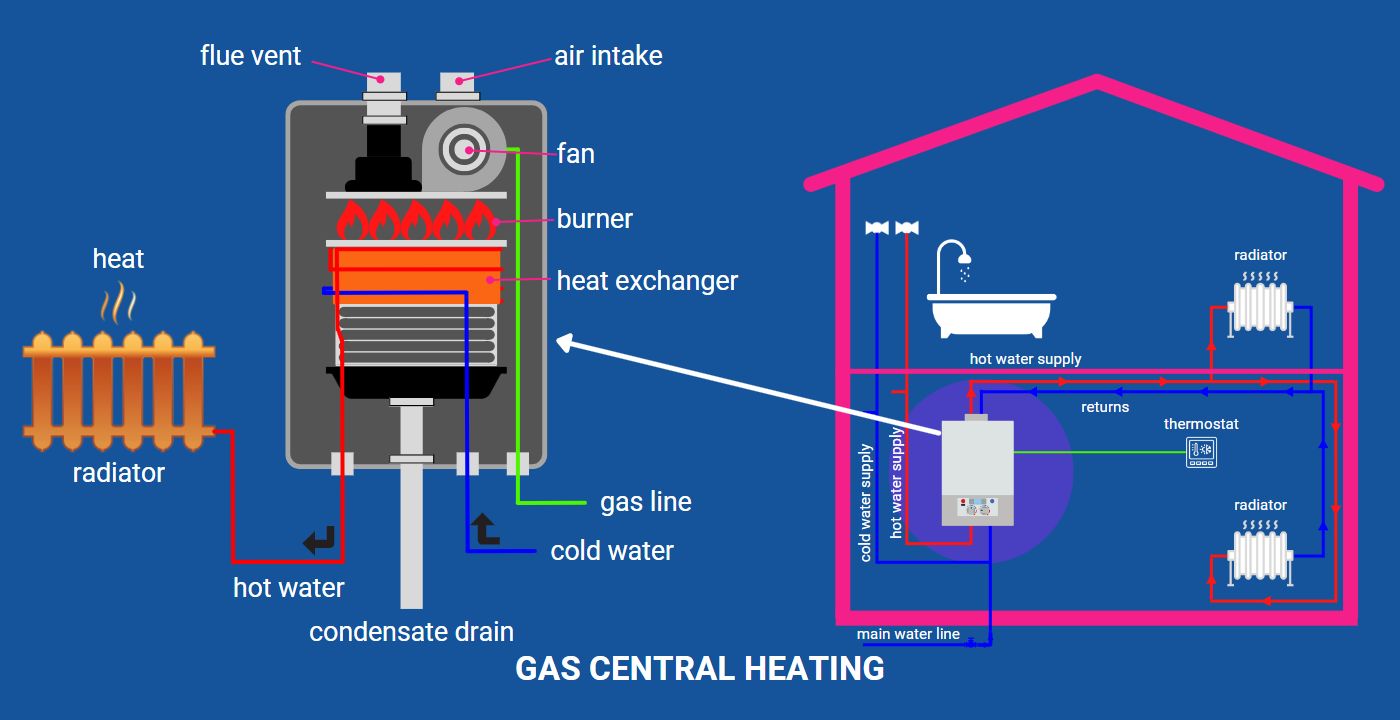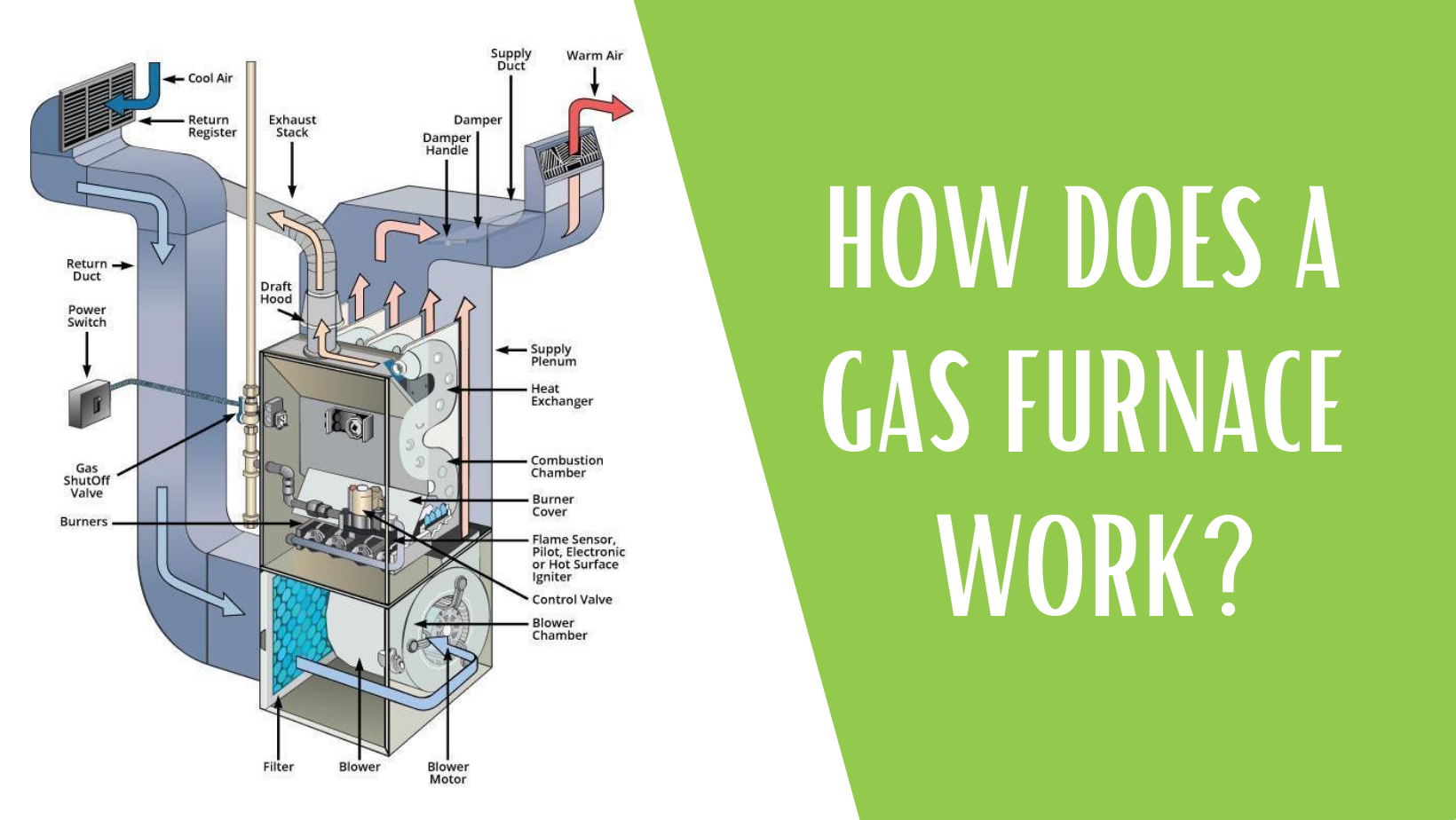How Does Natural Gas Heating Work

Natural gas heating is a widely used and generally efficient method for warming homes and businesses across the country. Understanding how it works, its advantages, and how to optimize it for energy savings is crucial in today's climate of rising energy costs and growing environmental consciousness. This article will break down the natural gas heating process, explore efficiency considerations, and offer actionable steps for homeowners, business owners, and HVAC professionals to reduce energy consumption and maximize cost savings.
The Fundamentals of Natural Gas Heating
At its core, natural gas heating relies on the combustion of natural gas to generate heat. This heat is then distributed throughout a building via various methods. The most common types of natural gas heating systems include:
- Forced Air Systems: These systems use a furnace to heat air, which is then circulated through ductwork by a blower fan to different rooms.
- Boilers: Boilers heat water, which is then circulated through radiators, baseboard heaters, or radiant floor systems to provide warmth.
- Radiant Heaters: These heaters directly warm objects and people in a room through infrared radiation.
The Combustion Process
The combustion process begins when natural gas is delivered to the furnace or boiler. Inside the unit, a burner mixes the gas with air in a controlled manner. An ignition source, such as a spark or pilot light, ignites the mixture, creating a flame. The heat from this flame is then transferred to a heat exchanger.
The heat exchanger is a critical component. It’s designed to efficiently transfer the heat from the combustion process to either air (in a forced air system) or water (in a boiler system) without allowing the exhaust gases to mix with the circulating air or water. This ensures safety and prevents harmful pollutants from entering the living space.
Once the heat has been transferred, the exhaust gases are vented outside through a flue or chimney. Efficient venting is essential for safety and proper operation. Carbon monoxide, a colorless and odorless gas produced during combustion, can be deadly. Regular inspection and maintenance of the venting system are crucial to prevent carbon monoxide poisoning.
Efficiency Ratings: Understanding AFUE and Beyond
The efficiency of a natural gas heating system is typically measured by its Annual Fuel Utilization Efficiency (AFUE). AFUE represents the percentage of fuel consumed that is actually converted into usable heat. For example, an AFUE of 90% means that 90% of the natural gas burned is used to heat the building, while the remaining 10% is lost through the exhaust.
The Energy Star program sets minimum AFUE standards for furnaces and boilers. As of the latest guidelines, Energy Star certified gas furnaces must have an AFUE of 95% or higher in the northern United States. While these standards don't apply nationwide, they provide a useful benchmark for efficiency.
Older furnaces often have AFUE ratings as low as 60% or 70%. Upgrading to a high-efficiency furnace can significantly reduce energy consumption and lower heating bills. The ROI can be substantial, especially when factoring in potential rebates and incentives offered by utility companies and government programs.
Beyond AFUE, consider these factors for overall system efficiency:
- Sealed Combustion: Furnaces with sealed combustion systems draw combustion air from outside the building, preventing the depletion of indoor air and reducing drafts.
- Variable-Speed Blowers: Variable-speed blowers in forced air systems can adjust the airflow based on heating demand, improving comfort and reducing energy consumption.
- Modulating Burners: Modulating burners can adjust the gas input based on heating demand, further enhancing efficiency and maintaining a more consistent temperature.
Optimizing Natural Gas Heating for Energy Savings
Beyond simply having a high-efficiency furnace or boiler, there are several steps homeowners and businesses can take to optimize their natural gas heating systems and reduce energy consumption:
Proper Insulation
Adequate insulation is the cornerstone of energy efficiency. Insulating walls, attics, and floors helps to prevent heat loss, reducing the amount of energy needed to maintain a comfortable temperature. According to the Department of Energy, proper insulation can save homeowners an average of 15% on heating and cooling costs.
Sealing Air Leaks
Air leaks around windows, doors, and other openings can significantly contribute to heat loss. Sealing these leaks with caulk, weather stripping, or expanding foam can prevent drafts and reduce energy consumption. Energy audits can help identify areas where air leaks are most prevalent.
Regular Maintenance
Regular maintenance is essential for maintaining the efficiency and longevity of a natural gas heating system. This includes:
- Changing Air Filters: Dirty air filters restrict airflow, forcing the furnace to work harder and reducing efficiency.
- Cleaning Burners: Clean burners ensure proper combustion and prevent the buildup of soot and other deposits.
- Inspecting Venting Systems: Regular inspection of the venting system can identify potential problems, such as blockages or leaks, and prevent carbon monoxide poisoning.
- Professional Tune-Ups: Annual tune-ups by a qualified HVAC technician can identify and address potential problems before they become major issues.
Smart Thermostats and Sensors
Smart thermostats offer advanced features that can significantly improve energy efficiency. These thermostats can learn your heating and cooling preferences and automatically adjust the temperature based on your schedule. They can also be controlled remotely via a smartphone or tablet, allowing you to adjust the temperature even when you're away from home.
Many smart thermostats also offer features like geofencing, which automatically adjusts the temperature when you leave or approach your home. Some models also integrate with smart sensors placed in different rooms, allowing for zone-based heating and cooling, ensuring that only the rooms that are being used are heated or cooled.
Studies have shown that smart thermostats can save homeowners an average of 10-12% on heating costs and 15% on cooling costs. Many utility companies offer rebates and incentives for installing smart thermostats, making them an even more attractive investment.
Programmable Thermostats
Even without the "smart" features, programmable thermostats are an upgrade. Setting a schedule to lower the temperature when you're away or asleep can lead to significant savings. Make sure to choose a thermostat compatible with your heating system.
Zone Heating
If you have a forced-air system, consider adding dampers to your ductwork to create zones. This allows you to heat only the areas of your home that are in use, further reducing energy consumption. Zone heating systems can be controlled manually or automatically with a smart thermostat.
Natural Gas vs. Other Heating Options
While natural gas is a popular and generally efficient heating option, it's important to consider alternatives:
- Electric Heat Pumps: Heat pumps are highly efficient, transferring heat rather than generating it. In moderate climates, they can be a very cost-effective option. However, their efficiency can decrease in extremely cold temperatures.
- Oil Heating: Oil heating is less common than natural gas, and oil prices tend to be more volatile. Oil furnaces also require more maintenance.
- Propane Heating: Propane is another fossil fuel option. While it can be used in areas without natural gas lines, it's generally more expensive than natural gas.
- Renewable Energy Sources: Geothermal and solar thermal systems can provide heating using renewable energy sources. While the initial investment can be higher, they offer long-term environmental and cost benefits.
The best heating option for a particular home or business depends on a variety of factors, including climate, fuel availability, and budget.
Rebates and Incentives
Numerous rebates and incentives are available to homeowners and businesses who invest in energy-efficient natural gas heating systems. These programs are typically offered by utility companies, government agencies, and manufacturers.
Examples of rebates and incentives include:
- Utility Company Rebates: Many utility companies offer rebates for installing high-efficiency furnaces, boilers, and smart thermostats.
- Federal Tax Credits: The federal government offers tax credits for certain energy-efficient home improvements, including the installation of qualified heating equipment.
- State and Local Incentives: Many states and local governments offer additional incentives for energy-efficient upgrades.
It's important to research available rebates and incentives before making any purchasing decisions. These programs can significantly reduce the upfront cost of energy-efficient equipment and improve the ROI of your investment.
Conclusion
Understanding how natural gas heating works and taking steps to optimize its efficiency can result in significant energy savings and reduced environmental impact. By investing in high-efficiency equipment, implementing proper insulation and air sealing measures, and utilizing smart thermostats and sensors, homeowners and businesses can create comfortable, energy-efficient spaces while lowering their energy bills. Furthermore, for HVAC contractors, selling and installing these energy-efficient solutions provides value to customers and demonstrates a commitment to sustainability.










